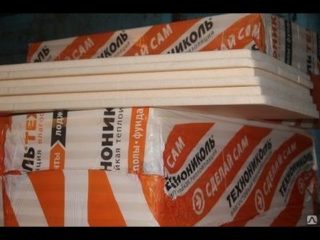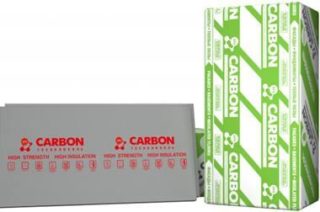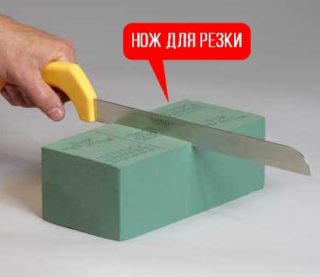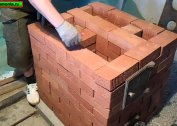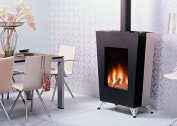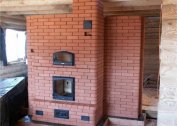Thermal insulation is an obligatory stage in the construction of private and multi-storey buildings, engineering structures, utility and office buildings. The modern market offers many materials for this event. Extruded polystyrene foam Technonikol is in the greatest demand. The insulation has a number of high performance characteristics, is available in various designs, which provides it with a wide range of applications at the most diverse facilities.
Features and differences
Extruded polystyrene TechnoNIKOL is a porous substance with a low density and low specific gravity. Plates are obtained by foaming, heating polymer materials, followed by passing it through an extruder. In the equipment, the mass is given the specified shape, after which it cools and cuts into plates. Sheets are packed, transported to the finished goods warehouse, and then they are sold.
Unlike polystyrene foam, consisting of compressed balls, the extrusion polystyrene foam TechnoNIKOL is a monolithic substance with closed inner cells. The composition of the material is uniform throughout the volume, the pore diameter varies between 0.1-0.2 mm. The universality of the composition of the material contributed to the creation of many of its varieties, differing in technical indicators.
The main types
The following brands of insulation are presented on the construction market:
- TechnoNIKOL Carbon Prof. This product is characterized by a high rate of pressure and bending strength. Plates are used in structures experiencing strong mechanical stress. The scope applies to all levels of residential and utility buildings.
- XPS Expanded polystyrene plates TechnoNIKOL XPS are designed specifically for the private sector. Introduction to the composition of the feedstock nanographite provides high thermal insulation qualities with a small thickness of the plates. The material is environmentally friendly and safe.
- XPS Carbon. Carbon is added to the material, due to which an increased strength of the material and its resistance to ultraviolet radiation are achieved. Expanded polystyrene extruded TechnoNIKOL XPS Carbon 35 300 is widely used in the construction of facilities experiencing increased vertical loads - landing strips, railways and roads.
- XPS CARBON Eco Drain. The products are equipped with drainage gutters that provide effective condensate drainage and ventilation of structures. Plates are used for insulation of roofs and foundations without additional decoration.
- Technoplex. It is a budget general purpose product. Designed for interior work with subsequent decoration.
When choosing a heater, you need to start from the conditions in which it will be used, the construction standards established by GOST and SNiP. In all cases, it is necessary to take into account the technical characteristics of the material, adhere to the price-quality criterion.
Physical and mechanical characteristics
TechnoNIKOL polystyrene boards have a wide range of applications due to their unique characteristics.
The main physical and mathematical characteristics of the material:
- thermal conductivity coefficient - 0.030-0.035 W / mK;
- vapor permeability - up to 0.01 mg / m × h × Pa;
- moisture absorption - up to 0.2% of the volume;
- elasticity - up to 17 MPa;
- bending strength - from 0.35 MPa;
- service life - 40-50 years;
- thickness - 20 mm, 50 mm, 100 mm;
- length - 1180 mm, 120 mm, 2380 mm;
- width - 580 mm, 600 mm.
The manufacturer produces boards with even and quarter-selected edges, a smooth and rough surface.
Advantages and disadvantages
Technonikol products are in high demand among private developers and in the construction of industrial facilities.
Such popularity is due to the following advantages of the material:
- low thermal conductivity;
- water tightness;
- immunity to the development of fungus and mold;
- resistance to compressive and bending loads;
- preservation of shape and volume throughout the entire service life;
- low specific gravity;
- simplicity and ease of installation;
- long term of operation;
- environmental Safety;
- wide range of application temperatures (± 75ºС).
The peculiarity of the polymer is that it is avoided by insects, birds and animals.
The material also has flaws. It is combustible and, when ignited, emits toxic substances that are harmful to human health. Some brands are unstable to ultraviolet light, which limits the conditions for their storage and use.
Features of the installation of extruded polystyrene TechnoNIKOL
Polystyrene foam insulation is a fairly simple task that even a beginner will cope with.
To work, you need such tools and materials:
- hammer drill;
- hammer, hacksaw;
- scissors, level, tape measure;
- serrated and leveling spatula;
- paint brush;
- steel profile, plastic corners; mesh sickle;
- adhesive for tiles, facade plaster, paint.
Glue the extruded polystyrene foam in the following sequence:
- Cleaning the base from dirt, leveling, strengthening the surface with a primer.
- Setting the start profile. It is needed to give an initial level to the masonry and to prevent the sliding of plates on the wall.
- Kneading glue, applying the solution to the plate. This can be done over the entire surface or pointwise.
- Laying out the first and subsequent rows. The gaps formed at the edges are measured, after which cut fragments are inserted into them.
- Finishing corners of the house with plastic corners with a grid. Sealing the remaining gaps with glue or foam.
- Drilling through holes in the walls through expanded polystyrene attached to them. Holes are made in the corners and in the middle of the fragments with an interval of 70-90 cm.
- Driving plate-shaped dowels into the holes. They are recessed in polystyrene by 1-2 mm.
- Surface reinforcement. A plastic mesh is glued onto it. Stripes overlap the previous ones by 15-20 cm.
- Insulation plaster. A layer of 3-5 mm thickness is applied.
- Primer and surface painting.
As a topcoat, you can use decorative panels, siding or clinker tiles. The choice is determined by the design of the building and the conditions of its operation.
Scope of application
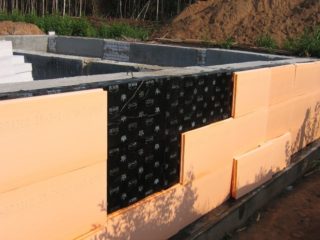
Expanded polystyrene Technoniikol is used to solve a wide variety of construction tasks of any level of complexity. Due to its unique properties, the material can be used for indoor and outdoor work in all climatic zones of the country.
The scope of the insulation affects the following areas of activity:
- Wall insulation. In most cases, the wet facade technology is used. However, EPSP perfectly performs the tasks of warming buildings in ventilated facades.
- Thermal insulation of floors. The pressure resistance of the material allows it to be glued directly to concrete slabs without arranging the frame.After fixing the substrate on it, you can immediately lay the laminate, parquet, engineering board. The polymer is strong enough not to deform under load.
- Thermal insulation works in low-rise construction. Here, insulation is used, starting from zero level. They glue the foundation, basement level, walls, floors and ceilings, lay under the blind area.
- Creating insulated roofs. Plates are used as intermediate layers between supporting structures and claddings. This approach allows you to get rid of condensate and heat loss through the roof.
- Road construction. Expanded polystyrene has proven itself in laying highways in permafrost. Thanks to this insulation, heat penetration into the soil, its thawing and subsidence are excluded.
Technonikol is also used in the manufacture of insulated car bodies and refrigeration equipment.
